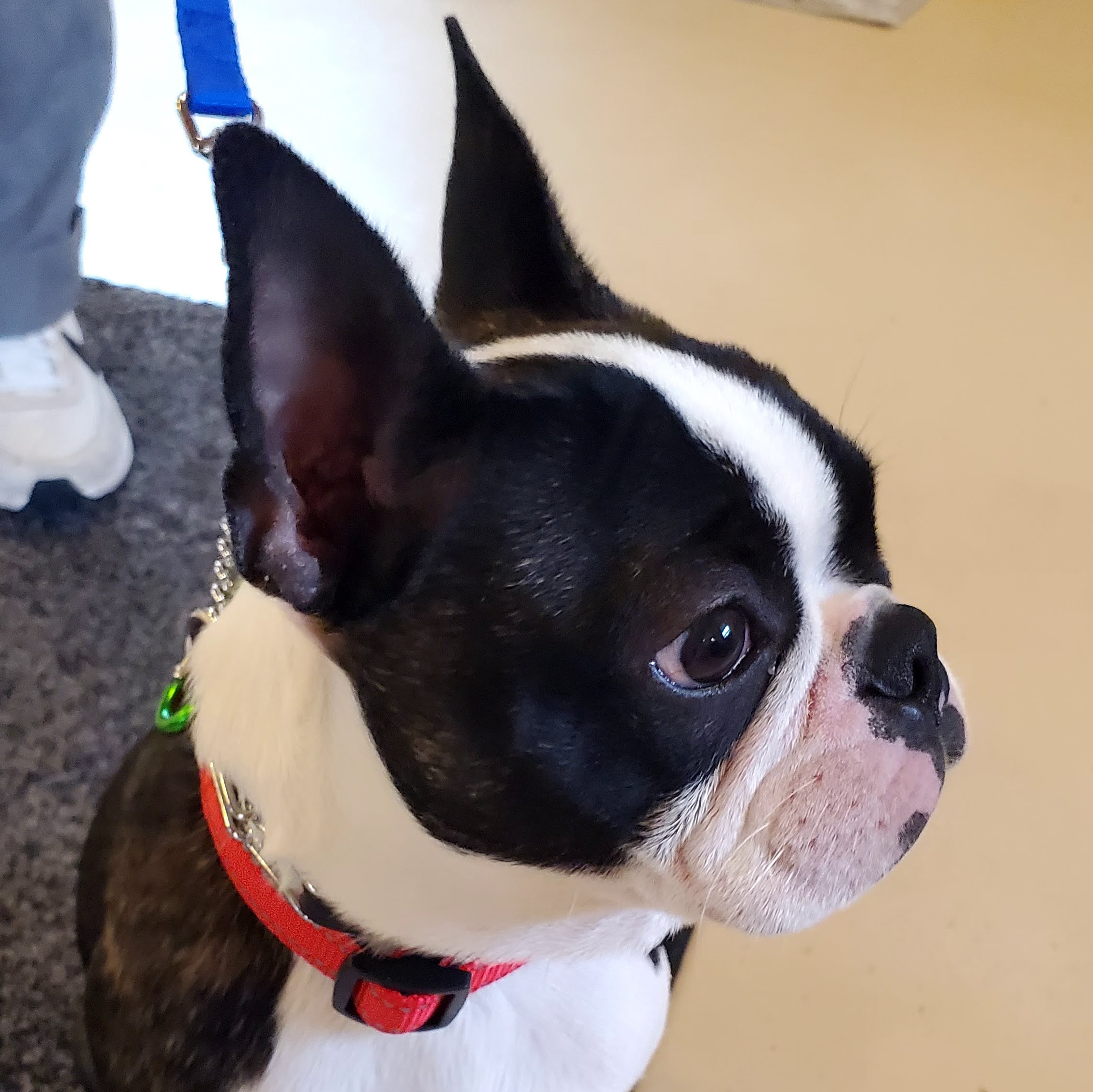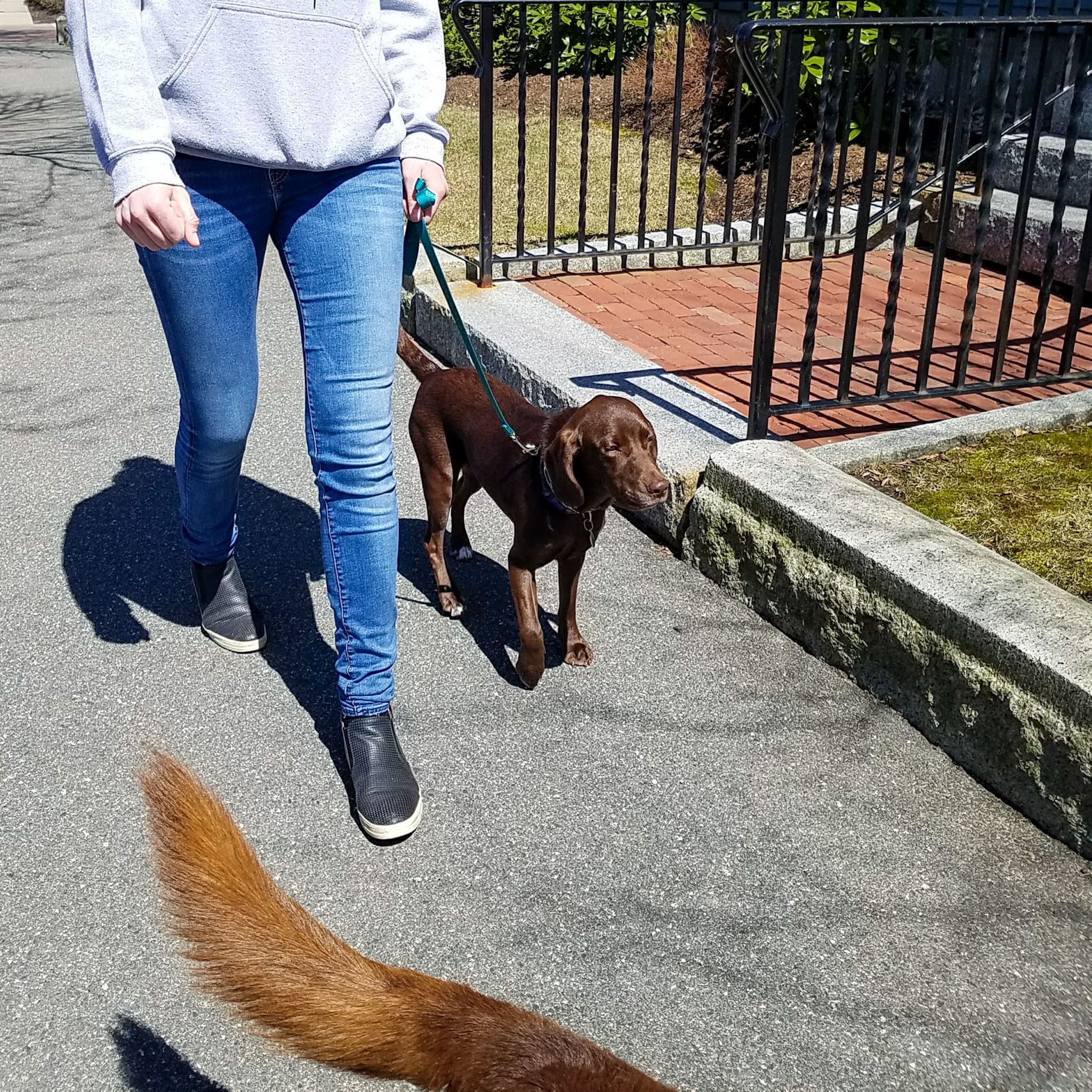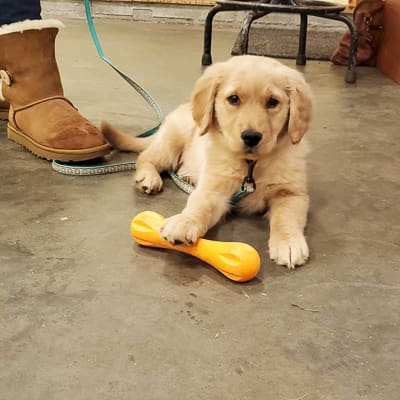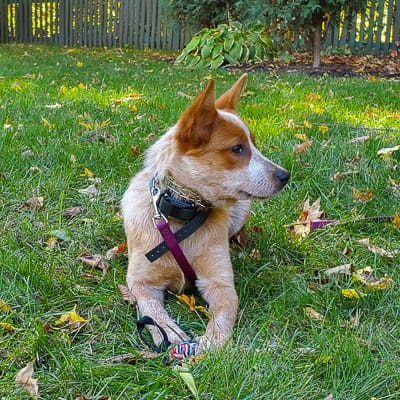Can a person be successful without using tools to change their dog’s behavior? Absolutely. But using these tools to train your dog speeds up the process and makes your consistent training effort very efficient. The use of training tools in our program can produce fast results.
Training tools have a bad reputation which is unfair and often based on improper use. Correctly conditioning your dog to understand exactly what you are asking of him is key. Through our process, we work with you and your dog to create a system of communicating your expectations through gentle leash pressure.
There are four main elements to Dog Coach training:
- Becoming a leader for your dog
- Setting boundaries for your dog
- Having a calm state of mind & nurturing the same for your dog
- Understanding training tools (leash, prong collar, dog crate, e-collar) to engage the first three elements effectively, humanely, and efficiently

Walking Your Dog Shouldn’t Be a Pulling Match, Regardless of the Tool You Choose
Prong collars are often incorrectly used in the same way as a flat, regular collar. Restraining your dog with a leash and collar is the least effective way to use these tools. Allowing your dog to lunge and continue to pull trains them to disregard any pressure and release action. Dogs learn ‘This is the way you want me to walk’ when we allow this behavior.
We approach prong collar training as a dance, where you help your dog make the right choice from the minute the leash is in your hand. It is a gentle corrective motion for every size dog. When you’ve established the language of pressure and release with your dog through the prong collar, you’ve learned how to keep your dog’s focused attention and all other obedience lessons will follow.
Here’s a clip of Sarah demonstrating proper prong collar use:

Do I Have To Use a Prong Collar To Train My Dog?
When you work with us, either in-person or online, a Herm Sprenger prong collar is a key part of the program we teach. All our previous clients’ success is built on their correct use of the prong collar. Some clients use the collar during the five weeks of training and then stop using it; that is a personal choice. When you no longer have dog behaviors you are working to change you may be ready to move on.
What About Slip Leads?
Slip leads are similar yet very different from using a prong collar. The pressure applied through the leash is conveyed to your dog’s neck in a similar way, however, the pressure needed with a slip lead is greater than the pressure used for a prong collar. We recommend training start with an appropriately sized Herm Sprenger prong collar to establish a new leadership with your dog. This is done through a leash conversation that communicates your higher expectations. Consider a slip lead, if you’d like, after you’ve made progress with a prong collar to maintain control.
We recommend the slip lead be a subsequent training phase, even when training with the remote collar. Slip leads or slip collars work best in tandem with a remote collar or e-collar. If you experiment with each tool, you will experience the differences in the communication/ pressure style and be able to choose how to control your dog effectively.


Why Do You Use Remote Collars?
We offer Foundation Training as a five-session introductory program that uses the prong collar, leash, and dog crate. Our Remote Collar Training program is also five sessions and includes the prong collar, leash, and dog crate lessons, with additional instruction in using an e-collar. We’ve answered the most common questions about e-collars here.

Remote collar training consists of the same foundation obedience lessons, with the e-collar signal overlaid on most commands. Training begins with a very low-level signal. We work with you from the ground up to determine your dog’s unique working level to properly condition and understand precisely what the e-collar signal means. One of the most unfortunate ways e-collars have been used is to strap it on and expect your dog to understand the signal’s meaning. It is important to refine your leash skills to condition your dog to understand the e-collar signal. Blind punishment is not the goal of using training tools. Tools and commands establish a common language (not English!) to have a better-behaved dog.
Our training teaches how to identify the appropriate e-collar signal given the behavior the dog is exhibiting. Owners learn to deliver precise corrections and communicate using a consistent signal language to convey desirable behavior versus behavior the dog must stop doing.

Who Are E-Collars Best for and How Do I Know if I Need One?
For some dogs, a prong collar and leash are simply not enough. Sometimes the sheer weight of the dog does not allow for an appropriate correction. Other times dangerous behavior drives the recommendation for the power of the “invisible leash.” It is an incredible tool and, when used properly, can be safely used on any dog. A major misconception that this tool is only for aggressive dogs or not for nervous, insecure dogs is inaccurate and unfair. In both instances, an e-collar can be positively life-changing for the owner and canine. Any dog can use an e-collar; certain dogs and owners need an e-collar to change behaviors.

Dog Coach Believes in Balanced Training Methods Because They Work
We didn’t always train our dogs with prong collars and remote collars; our dogs were not well-behaved either. After adopting Westley who was reactive/aggressive, it became clear that training tools are often needed to effectively and efficiently train better-behaved dogs. Over the last decade, we have helped hundreds of families enjoy and have more fun with their dogs. Dog Coach is here to help when you’re struggling and looking for an answer for how to have the best dog in the neighborhood.

Our In-Person Programs

Team Puppy Training
Encourages your leadership and show how you to nurture good behavior.

Foundation Training
Covers the basics of good dog behavior as well as some behavior modification.

Remote Collar Training
Foundation Training with e-collar for total off-leash freedom and behavior modification.
What our clients have to say...
Dog Coach listened carefully and observed keenly my interaction and tone of voice with Bella. At nearly 6 months now, she is the best-trained dog I've had. It was a worthwhile experience!
We want to thank Dog Coach for your patience and encouragement! Our dogs are really coming into their own as the perfect family dogs we were looking for!
Such a great investment! We got a puppy and had a toddler... It was overwhelming at first. Working with Dog Coach has been the gift that keeps on giving.
